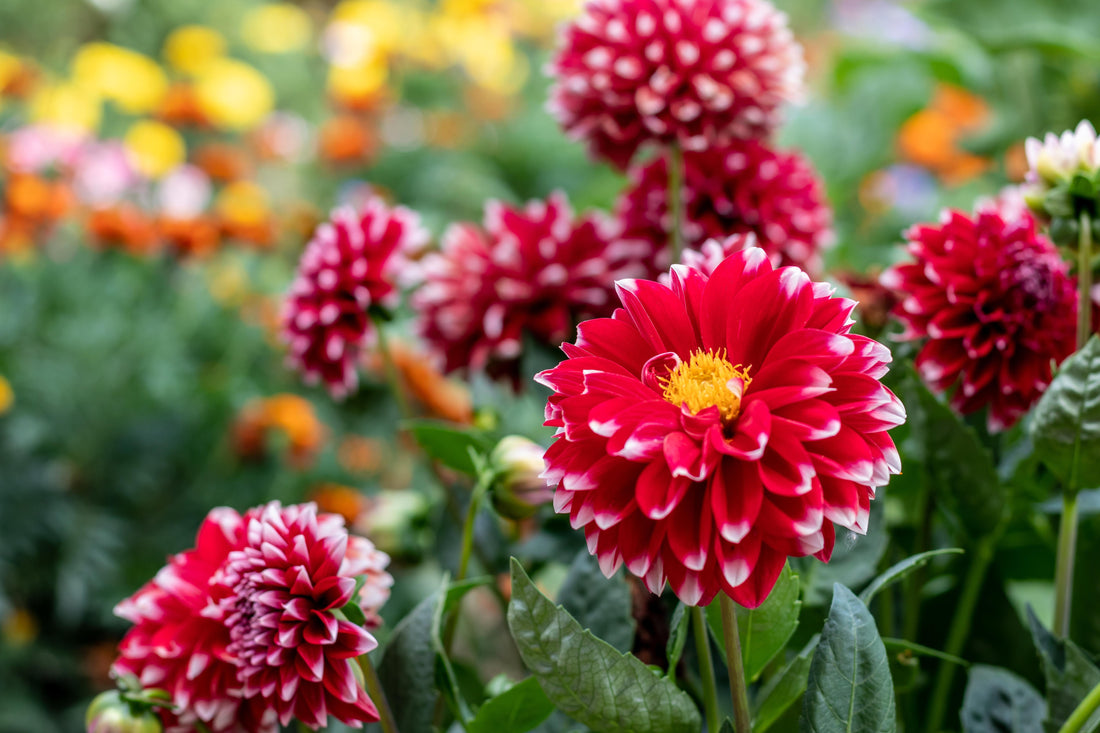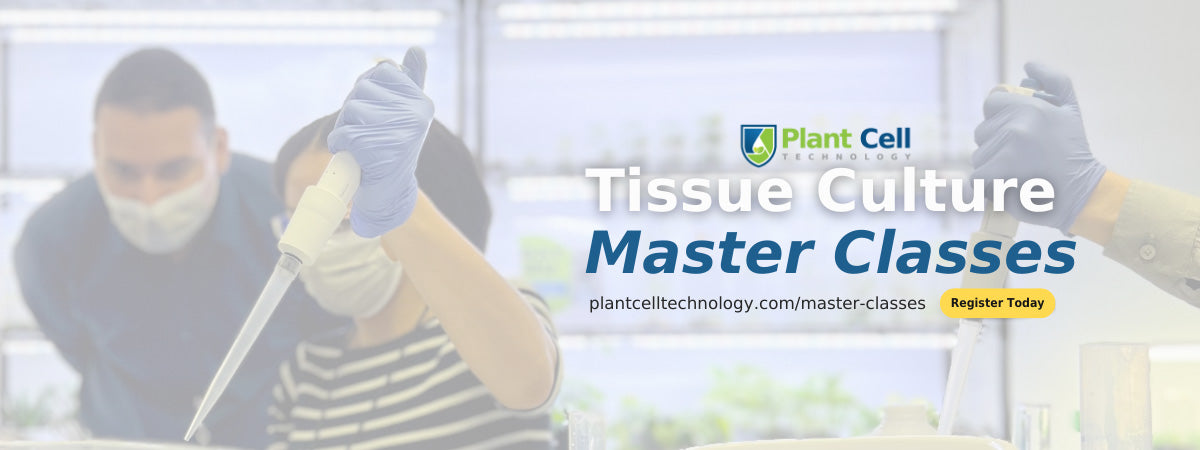
How to Tissue Culture Dahlia Flowers!
As a content and community manager, I leverage my expertise in plant biotechnology, passion for tissue culture, and writing skills to create compelling articles, simplifying intricate scientific concepts, and address your inquiries. As a dedicated science communicator, I strive to spark curiosity and foster a love for science in my audience.


Get to Know About Dahlia
What comes to mind when you hear the word "Dahlia"?
Vivid, small, and large flowers in a kaleidoscope of colors, right? These colors don't just blend in; they stand out, making any environment burst with life.
But did you know it's also the national flower of Mexico?
Dahlia, a genus of tuberous, bushy, perennial, and herbaceous plants, belongs to the Asteraceae family—a family that boasts sunflowers, daisies, zinnias, and chrysanthemums. Within the Dahlia genus, there are 42 diverse species, each flaunting flowers of varying sizes, ranging from delicate 5 cm (2 in) blooms to impressive 30 cm (1 ft) blossoms.
Surprisingly, despite their vibrant hues, most Dahlia plants don't bless us with scented flowers. Originating primarily from Mexico, these blooms have also found their way to South America. Certain Dahlia species have even taken root in Central America and northern parts of South America.
Traditionally, Dahlias are grown from shoot cuttings. Yet, this method demands numerous mother plants for commercial cultivation. Alternatively, they can be cultivated using tuberous roots, although this approach is most suitable for amateur gardeners or when producing smaller quantities of plants.
In this article, we'll delve into the world of tissue culture as a method for growing Dahlias. Plus, we'll explore the myriad benefits and advantages this technique brings to the table. Get ready to discover the art and science behind Dahlia cultivation!

What Do You Know About The Tissue Culture Technique?
Plant tissue culture, a cutting-edge scientific technique, which allows scientists to propagate and manipulate plants outside their natural environment. Through a delicate balance of nutrients, hormones, and environmental factors, cells are coaxed to divide, differentiate, and develop into complete plants. This method provides an invaluable window into understanding plant growth, development, and genetics.
The technique offers numerous benefits to culturists, including:
- Mass Production of Genetically Identical Plants
- Disease-Free Plant Propagation
- Genetic Preservation and Conservation
- Crop Improvement and Genetic Modification
- Year-Round Production Independent of Seasons
- Essential Tool for Plant Research and Biotechnology
- Production of Bioactive Compounds from Medicinal Plants
- Conservation of Endangered Plant Species
- Space Conservation in Agriculture
- Overcoming Seed Limitations in Plant Propagation
The applications of plant tissue culture are boundless. From creating disease-resistant crop varieties to conserving endangered plant species, this technique propels agricultural innovation and biodiversity preservation. Moreover, it fuels the world of ornamental horticulture, enabling the propagation of unique and exotic plants that grace gardens, greenhouses, and botanical collections globally.

Tissue Culture of Dahlia
Dahlia, a beloved garden favorite and commercially sought-after as cut flowers, enjoys widespread popularity. The demand for this vibrant plant is ever on the rise, with global exports thriving. Yet, conventional methods fall short when it comes to producing the sheer numbers required to meet market demands.
This is where tissue culture emerges as the ultimate solution. This remarkable technique transforms just a few plant tissues into an abundance of flourishing specimens. Just imagine the potential—how many plants can you grow from a single leaf? The possibilities are virtually limitless!
However, success in tissue culture depends on several critical factors, including:
- Source of explant
- Size of explant
- Mother plant species
- Positioning of explant in plant media
- Media composition
- Part of plant used as explant and many more.
Furthermore, each plant has its own unique protocol, involving media composition for establishment, stem regeneration, and rooting stages. The right conditions for nurturing these regenerating plants are equally vital.
Provided below is a tissue culture protocol for Dahlia, specifically using meristem tip explants, derived from a study by Gerald G. Weland on meristem tip culture.
In traditional cultivation, Dahlia faces the constant threat of viral diseases, with the Dahlia mosaic virus being a prominent concern. Meristem culture offers a practical solution for growing disease-free plants, as this plant part is naturally less susceptible to infections.
The procedure of Meristem tip culture of Dahlia
Explant: Meristem shoot tip, as shown in the figure below.

Figure: Upper left: An illustration f a typical Dahlia Cane; Right: Boxed area of upper left figure; Lower left: the labeled area is shoot tip, that is to be taken for propagation
Picture Credit: Gerald G. Weland
Explant Excision:
- Use a microscope to cut out around a shiny dome-shaped structure. Remove primordial leaves for clear visualization of the structure. Make sure not to damage the explant.
Surface sterilization of Explant:
- Dip and agitate the explant for 5-10 seconds in a surfactant such as a solution of 75% Ethanol, TWEEN-20, or plain detergent.
- Transfer the explant into a solution of 6 % Calcium Hypochlorite or Sodium Hypochlorite (Clorox ) for about 10 minutes.
- Drain and rinse in distilled water three or four times.
Culturing:
- Place the explant in a culture media-containing tube.
- The media is prepared as:
Take MS media as add following organic substances:
| S. No. | Substances to be added | Concentration |
| 1. | Sucrose | 30 g/l of medium |
| 2. | Vitamins: Thiamine HCl | 0.4 mg/l of medium |
| 3. | I - inositol | 100 mg/l of medium |
| 4. | Amino Acid: L - tyrosine | 100 mg/l of medium |
| 5. | Kinetin | 1 mg/l of medium |
| 6. | Indole - 3 acetic acid, IAA | 1mg/l of medium |
| 7. | Agar | 7 g/l of medium |
- After 2-3 weeks small propagules can be observed, which will be growing and becoming greener. And, within 6-8 weeks some will show callus formation and some will show shoot growth.
Note: Discard any propagule that’s not showing any growth response after 6-8 weeks.
Rooting:
- After 6-8 weeks, transfer the plantlets to rooting media, same as culturing media, but with ¼ kinetin added to the media.
- After a few weeks, you can observe regenerated roots.
Transplanting:
- After the cultured plants develop a significant root system, remove them and wash the roots gently with distilled water to remove any sticky media from the plant.
- Transfer the plant to a pot containing dry sand, which was watered until the sand is saturated. Then remove excess water.
- After 2-4 weeks, you can observe new changes in the plants.
Achieve Excellence in Your Tissue Culture Methods with Plant Cell Technology

Plant Cell Technology is helping tissue culturists worldwide by providing unique and world-class products and services that smoothen their process. The PCT Store has MS media, agar, gellan gum, Plant Preservative Mixture (PPM™), culture vessels, Biocoupler™, and masks in its store to facilitate your processes.
We also curate weekly blogs and videos on tissue culture topics. They are all related to tissue culture equipment, practical, tips, and tricks, how-tos, basic concepts, and the latest news. Our YouTube videos teach you exactly how to carry out the tissue culture operation.
And, yes! If you’re stuck at any stage of tissue culture, you can book an appointment with our tissue culture expert. They will help you to solve your query on a video call and give you the right direction to proceed with your experiment.
Occasionally, we also bring you comprehensive master classes led by tissue culture experts, having 15-30 years of experience in the field. The two most frequently conducted classes include Cannabis tissue culture master class and Houseplant and Carnivorous plant tissue culture master class.
Interested in learning more about our master classes and joining your favorite one? Visit this link now!
Blog Categories
View by Level
Popular Blogs

6 Plant Tissue Culture Books to Keep Learning
Introduction Most of us are fans of books when it comes to learning a topic in detail and in a...
Read More
New Technical Agar Vs Supreme Agar
Introduction What’s the secret element that supports and holds plants in vitro? Not sure? It’s the solidifying agent. Solidifying agents...
Read MoreSubscribe to Our Newsletter









Join the conversation
Your email address will not be published. Required fields are marked